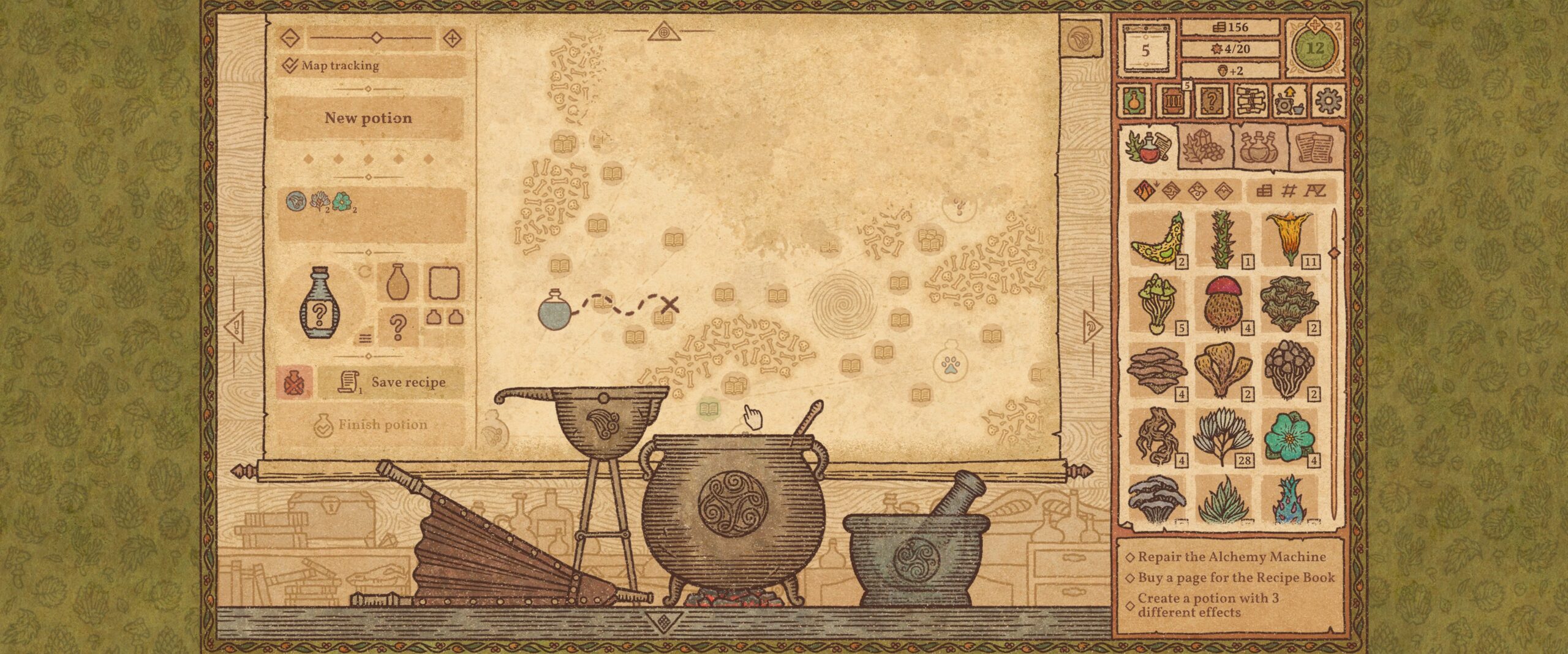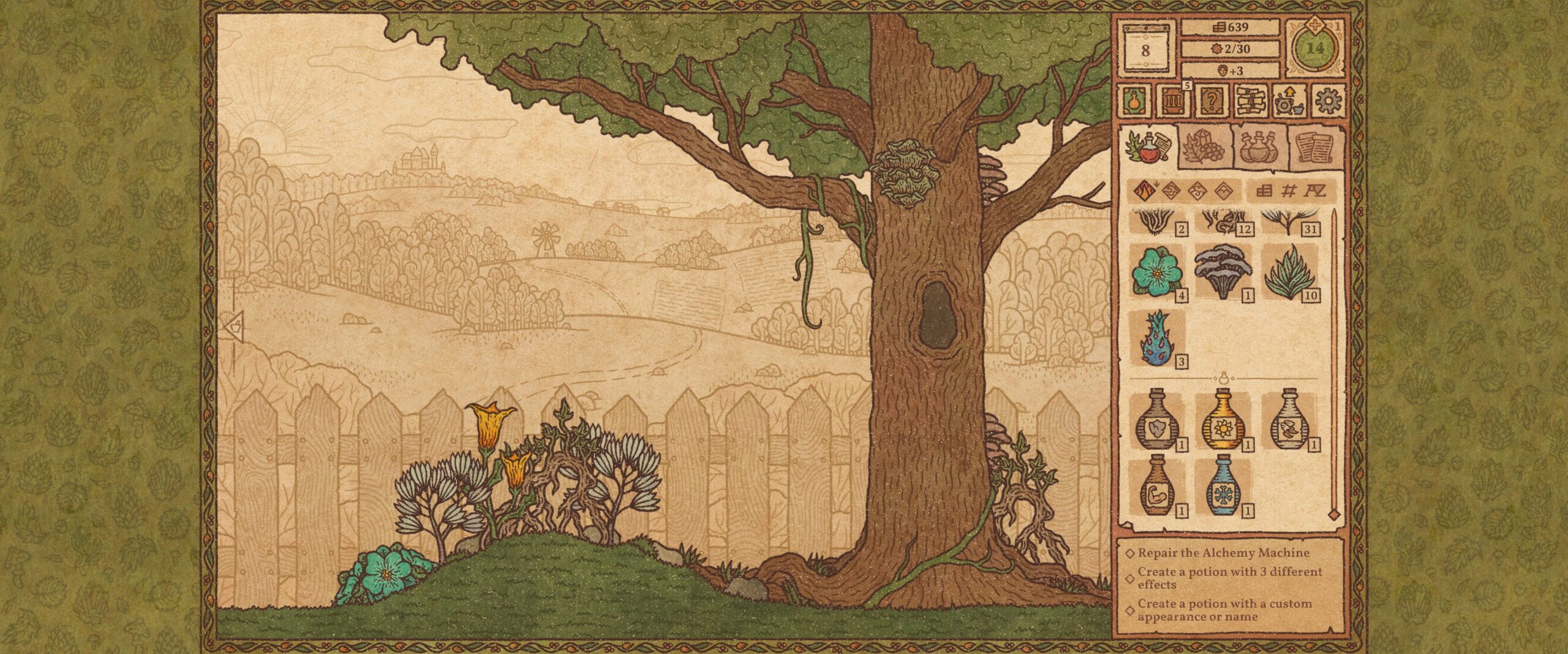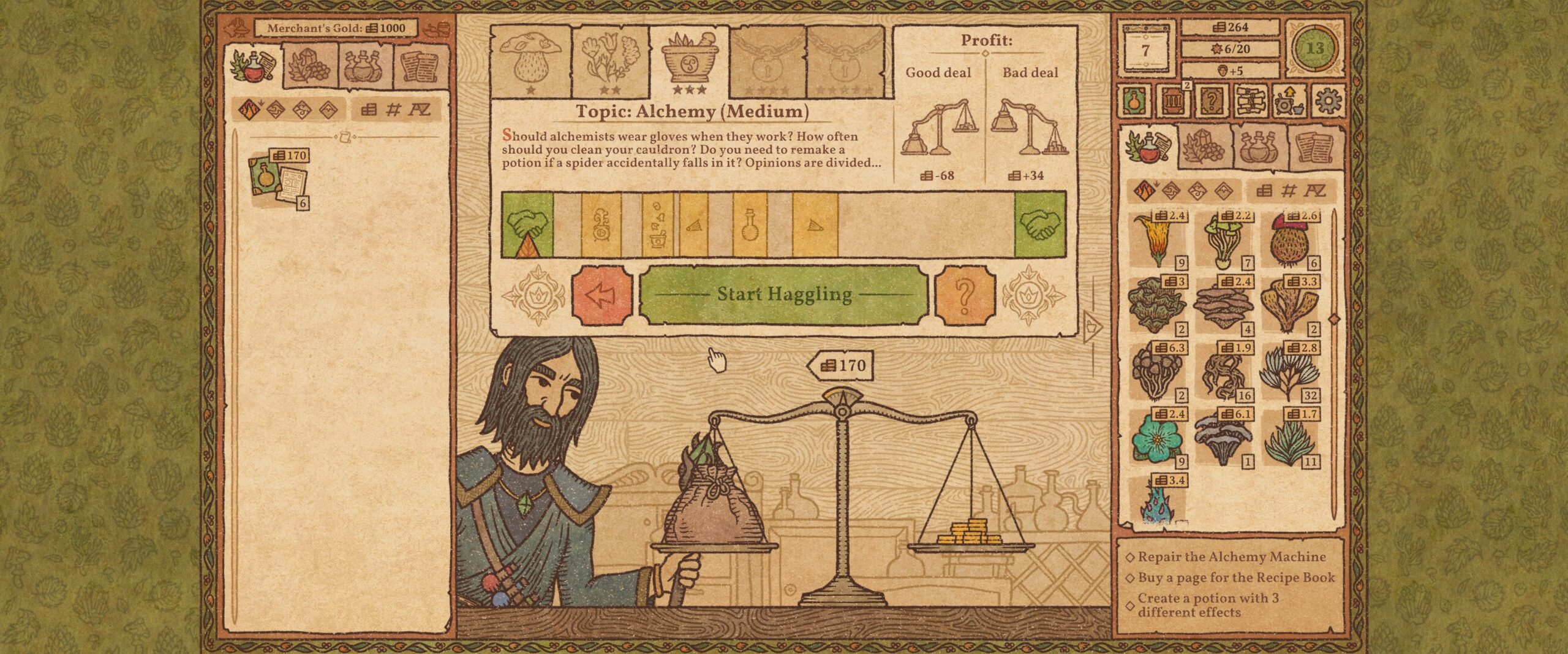Back in the day I used to have a rule (indeed I had many!) when it came to reviewing games: I had to finish them before I could review it. Trouble with that rule is that it meant sometimes rushing other games, whilst playing others well past the point I was done with them, often rating them far lower because of it. I don’t hold myself to that rule anymore, now satisfied when I can usually identify the core game loop and, should it interest me, then I’ll play it through to completion. But if if I find something dragging a bit for me? I’ll cap it there, lest I judge the game unfairly just because I forced myself to play beyond the point of enjoyment. So was my experience with Potion Craft, the core game loop intriguing enough, but not sufficient enough for me to want to grind through the various levels of progression to get to the end.

There’s no story to speak of, save for some introductory ramblings about you taking over an old alchemist’s house and the town folk coming to you for various remedies. The initial premise is simple: use ingredients that you get from your enchanted garden or from trading with townspeople to craft the various potions they desire. You do this by combining various herbs, flowers, berries, etc. which then have your potion walk “The Alchemist’s Path” on the map, tracing out a route that leads to a desired effect. Once you get there you boil the potion to lock in the effect whereupon you can complete it ready for sale or continue the path by adding further ingredients.
Visually Potion Craft has a very unique aesthetic, taking inspiration from medieval manuscripts. The animations are positively delightful as well and indeed it was a gif of the mortar and pestle to the gamedev subreddit that initially piqued my interest in the game. The whole experience feels incredibly tactile without the use of any feedback, I can only imagine it’d be a lot more immersive with the use of controller (if just a touch less precise, which is key as I’ll explain). The devs even get full credit for properly supporting widescreen monitors, filling in the background with beautiful texturing rather just going with black bars.

The game does a good job of introducing the basics to you at the start, keeping things really simple and introducing things piece by piece so you get a good feel for how the crafting works. However that’s where the hand holding finishes and from there you’re basically on your own in figuring out how to beat the game’s main challenge: crafting potions for customers. The first few days of this are really easy as the effects most people are looking for aren’t too far away. However later on things start to get real tricky when you need an effect that’s well off in the distance as you don’t have any good ways of knowing if you’re in the ballpark or not.
I initially figured that different directions would generally align to different elements and that’s partially true: fire related things seem to be on the left, water things on the right, and earth things down below. But beyond that there doesn’t seem to be a ton of consistency and it’s hard to know where you should go to find something that a customer wants. The trouble here is the balancing act you need to walk: spend too many of your materials on exploration and you won’t have enough for customers, turfing your reputation and leaving you penniless. Don’t spend enough and customers start asking for things you can’t make. To be sure you can just burn through days quickly, not worrying about reputation to stock up a bit, but as a chronic min/maxer that definitely rubbed me the wrong way.

I will say that I did enjoy the act of exploration, finding something, crafting it and then going back to fully optimise the recipe so I didn’t have to burn as many mats next time around. Getting level 1 and 2 potions is quite easy, but dialing in a level 3 is quite an undertaking. Thankfully the controls are fine grained enough that this isn’t just a case of trial and error or burning through numerous ingredients; no once you’re close enough usually one additional herb and some water tuning is all you’ll need to get the recipe that you want.
It was once I’d burnt through all the 5~6ish ingredient effects that I realised I’d be burning through quite a lot more materials each day to try and find new effects. I didn’t think this was going to be too bad, but it only took a couple days before my stores of basically everything were dry. At this point I tried burning through a couple more days to stock up, but this was where I started to see the grind aspect I’d have to go through in order to really progress. To be sure I know there are parts of the game I didn’t see because I stopped here, like the alchemy machine, which may have changed things one way or the other but, in all honesty, I felt like I’d had my fill at this point. Part of this might be due to it being on Gamepass and me not really being invested due to it being “free”, but I’m not 100% sure on that.

For my (admittedly short) time with it though I definitely enjoy the casual game play that Potion Craft: Alchemist Simulator provides. The aesthetic is definitely it’s shining star, everything from the medieval visuals to the fantastically tactile animations all come together well. The core game loop might not be for me, but I can feel like there’s a lot of people out there in the simulation enjoyer field who’ll get numerous hours out of it.
Rating: 7.75/10
Potion Craft: Alchemist Simulator is available on PC right now for $21.50. Total play time was approximately 1.75 hours with 4% of the achievements unlocked.



